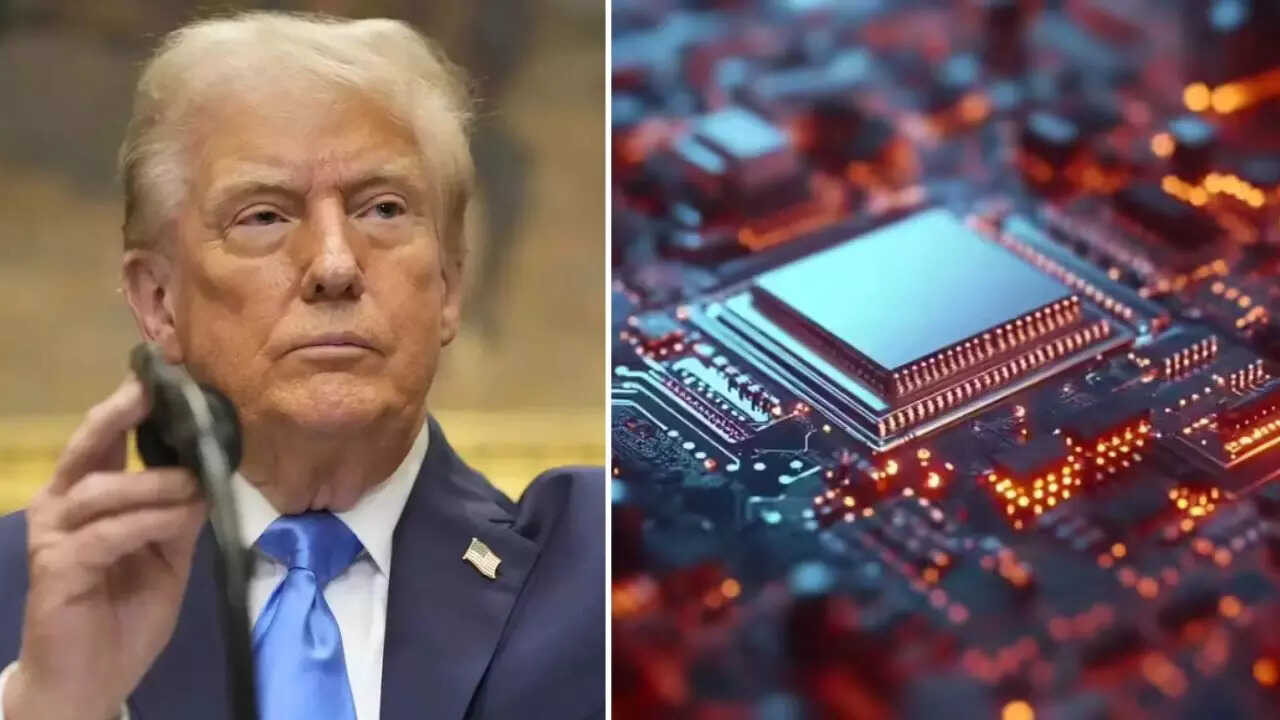The Trump administration is reportedly planning new tariffs on imported electronics, based on their chip content, to boost US manufacturing. This move could impose a 25% rate on chip value, potentially raising costs for American consumers and worsening inflation. Major chipmakers like TSMC and Samsung might face significant impact, as the policy aims to reshore critical production.
The Chip War Brews: Will Tariffs on Foreign Electronics Spark a Global Trade Showdown?
The air is thick with tension in the global tech world. Whispers are turning into pronouncements, and the potential consequences could ripple through supply chains and ultimately, impact the price of your next smartphone or laptop. The focus? Chips – the tiny, yet powerful, semiconductors that are the brains behind nearly every electronic device we use. A recent report suggests that the previous administration seriously considered slapping tariffs on electronics containing foreign-made chips, all in the name of national economic security. But what does this really mean, and could such a drastic measure actually work?
Imagine a world where your favorite gadgets suddenly become significantly more expensive. That’s a very real possibility if tariffs are imposed on electronics reliant on overseas chips. The rationale behind this move, ostensibly, is to incentivize domestic chip manufacturing and reduce reliance on foreign sources, particularly those perceived as potential adversaries. The argument is simple: dependence on foreign suppliers for critical components like semiconductors creates vulnerabilities in the national economy. Disruptions in supply, whether due to geopolitical tensions or unforeseen events, could cripple industries and impact national security.
But the reality is far more complex. The global semiconductor industry is a tangled web of specialization and collaboration. No single country currently possesses the complete capability to manufacture all the chips it needs. Trying to disentangle this web with tariffs could have unintended and potentially devastating consequences.
The Perils of Protectionism: A Double-Edged Sword
While bolstering domestic manufacturing is undoubtedly a worthy goal, tariffs are a blunt instrument. Instead of nurturing innovation and competitiveness, they often lead to retaliatory measures from other countries, sparking trade wars that hurt everyone involved. Consider the immediate impact: companies relying on foreign chips for their products would face higher costs, which they would likely pass on to consumers. This could lead to decreased demand, impacting sales and potentially leading to job losses.
Furthermore, tariffs could stifle innovation. Companies might be forced to prioritize sourcing chips from domestic manufacturers, even if those chips are not the most advanced or cost-effective. This could hinder the development of cutting-edge technologies and ultimately put domestic industries at a disadvantage in the long run. The intricate nature of modern electronics means that even seemingly small tariffs can have a cascading effect, disrupting entire supply chains and creating unforeseen bottlenecks.

A Better Path Forward: Investing in Innovation and Collaboration
Instead of resorting to protectionist measures, a more effective approach would involve strategic investments in research and development, infrastructure, and workforce training. By creating a supportive ecosystem for domestic chip manufacturing, the nation can attract investment, foster innovation, and ultimately become more competitive in the global market. This requires a long-term vision and a commitment to collaboration between government, industry, and academia. Think of it as building a better playground for innovation, rather than building walls to keep others out.
The potential for international cooperation is another key factor. Working with allies to diversify supply chains and establish trusted partnerships can reduce reliance on any single source and mitigate the risks associated with geopolitical tensions. This collaborative approach fosters stability and resilience in the global semiconductor industry, benefiting all participants. For example, exploring potential joint ventures or knowledge-sharing initiatives with countries with established semiconductor expertise could prove invaluable. Building these relationships now is crucial for long-term economic health. This complements efforts to increase domestic manufacturing capacity. You can read more about fostering innovation through interdisciplinary collaboration internally.
Navigating the Semiconductor Landscape
The debate surrounding tariffs on electronics containing foreign-made chips highlights the critical importance of semiconductors in the modern economy. It also underscores the complex challenges involved in balancing national economic security with the benefits of global trade. The choices made today will have a profound impact on the future of the semiconductor industry and the competitiveness of the nation in the years to come. A measured, strategic approach that prioritizes innovation, collaboration, and long-term sustainability is essential to navigating this complex landscape. Ultimately, the goal should be to foster a thriving and resilient semiconductor industry that benefits everyone, not just a select few.







